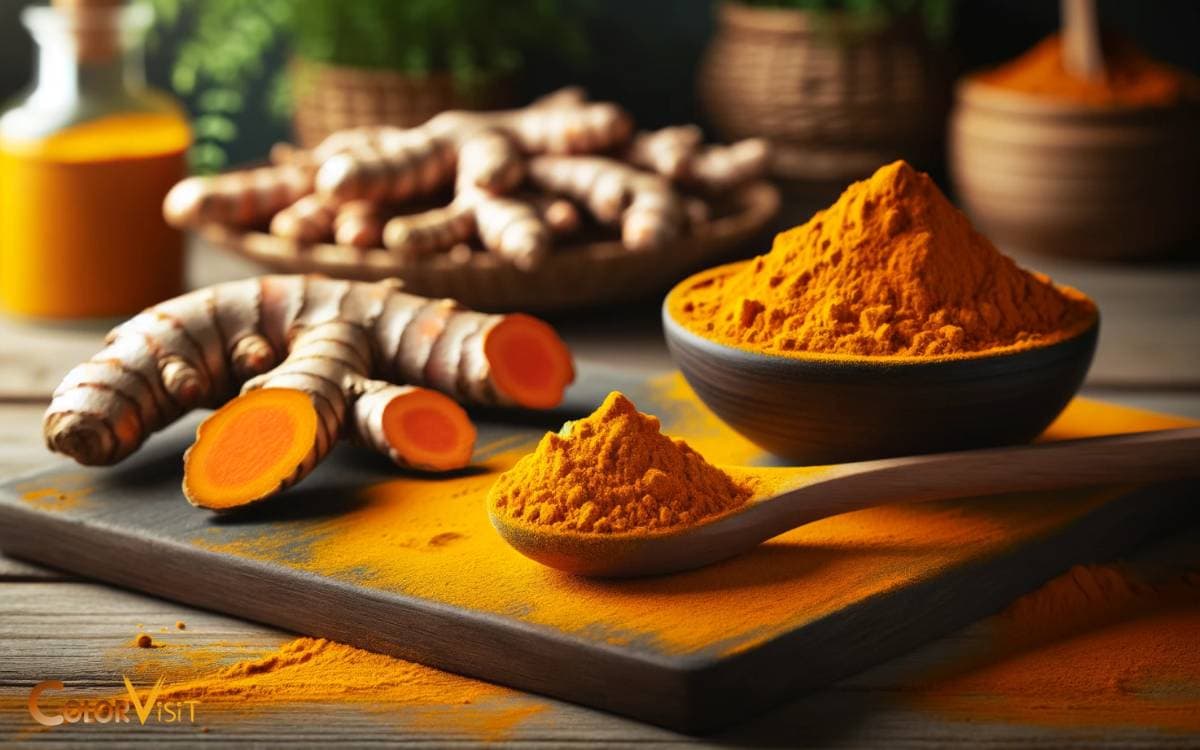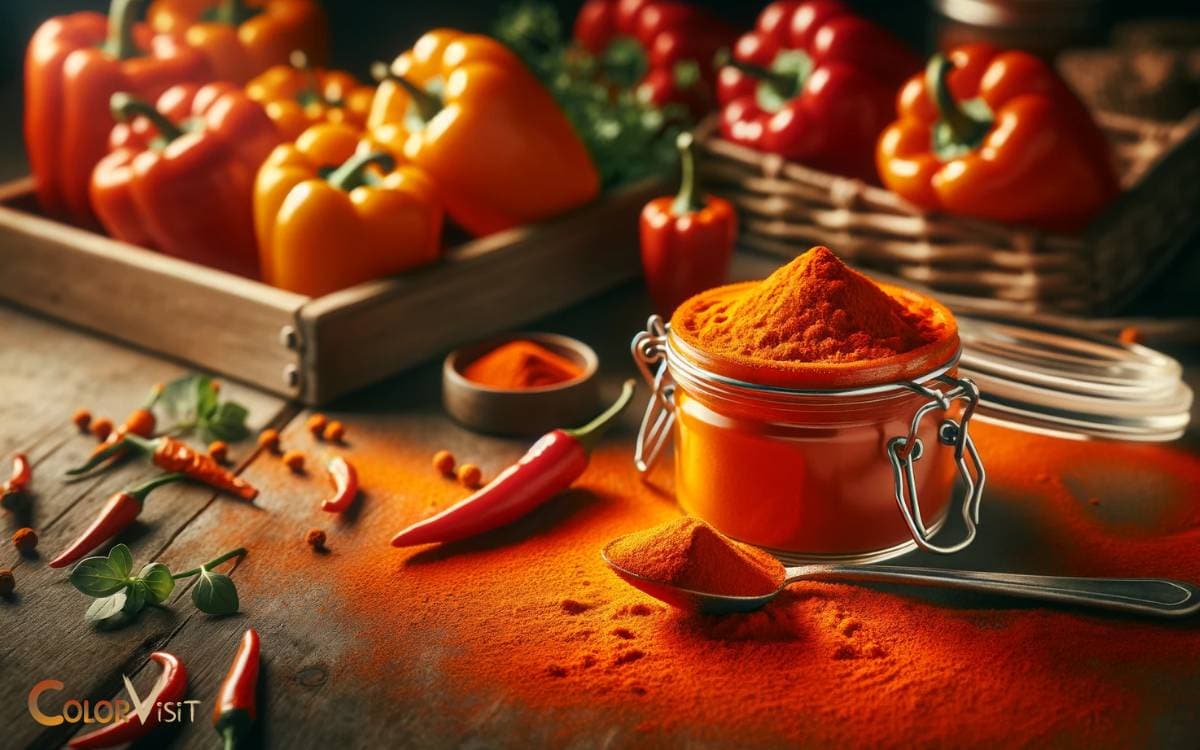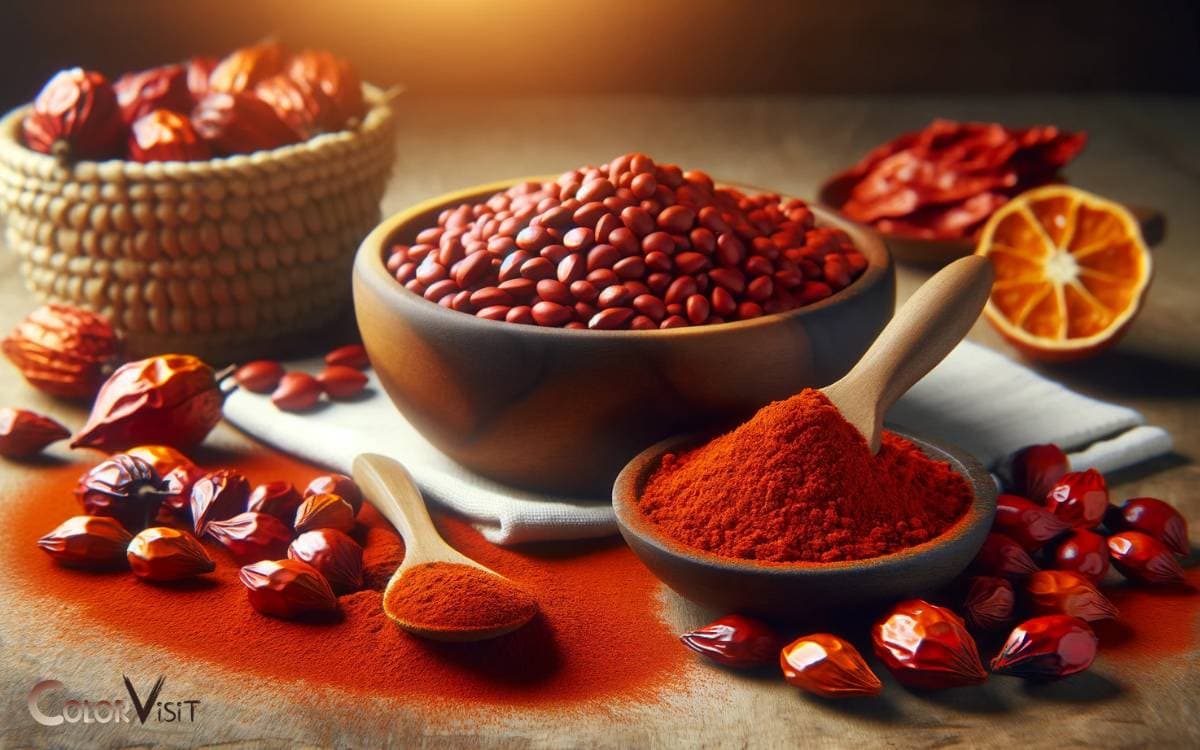How to Make Orange Without Red Food Coloring? Expert Guide!
Create a natural orange color for food by using alternatives such as turmeric or carrot juice instead of red food coloring. Both ingredients provide a vivid orange hue perfect for various culinary applications.
To make orange without red food coloring, you can rely on natural ingredients that impart an orange shade.
Here’s how you can use two of them:
Achieving a beautiful orange hue in your dishes is possible with natural ingredients, ensuring your food is free from artificial colorings and full of vibrant appeal.
Key Takeaway
Natural Ingredients for Orange Color
Using natural ingredients is an effective way to achieve an orange color without relying on red food coloring.
- One such natural ingredient is paprika, which contains the pigment carotenoid, responsible for its vibrant orange hue.
- Carotenoids are fat-soluble compounds found in various fruits and vegetables, and they are commonly used as natural colorants.
- Another natural option is annatto, derived from the seeds of the achiote tree.
- The pigment in annatto, bixin, imparts a rich orange color and is frequently used in cheese, butter, and other food products.
- Additionally, turmeric, a spice derived from the Curcuma longa plant, contains the compound curcumin, which gives it a bright orange-yellow color.
Utilizing these natural ingredients not only avoids the use of artificial colorants but also adds nutritional value to the final product.
Using Carrot Juice for Orange Hue
Carrot juice contains natural pigments called carotenoids, which contribute to its vibrant orange color.
These pigments, such as beta-carotene, give carrot juice its characteristic hue and provide a subtle sweetness to the color.
When used in food or beverage applications, carrot juice can impart a natural orange tone without the need for artificial red food coloring.
Carrot Juice’s Natural Color
Achieving an orange hue without red food coloring can be accomplished by incorporating the natural color of carrot juice.
- Carrot juice contains high levels of beta-carotene, a pigment responsible for its vibrant orange color.
- Beta-carotene is a carotenoid compound that reflects orange light wavelengths, giving carrot juice its characteristic hue.
- When used as a natural colorant, carrot juice imparts a rich and intense orange color to various food products, ranging from baked goods to savory dishes.
- Its natural and earthy tones make it an ideal alternative to synthetic food dyes.
- Furthermore, the use of carrot juice aligns with the growing consumer demand for clean-label and natural ingredients in food products.
Subtle Sweetness in Color
The natural color of carrot juice contributes to the subtle sweetness in the resulting hue, reflecting the growing consumer demand for clean-label and natural ingredients in food products.
- Carrot juice contains carotenoids, particularly beta-carotene, which imparts the characteristic orange color.
- These natural pigments not only provide a pleasing visual appeal but also offer nutritional benefits, as carotenoids serve as antioxidants and precursors to vitamin A.
- The use of carrot juice to achieve an orange hue aligns with the trend towards clean-label formulations, meeting consumer preferences for natural and recognizable ingredients.
This approach not only addresses concerns regarding synthetic additives but also adds a touch of wholesomeness to the final product, appealing to the modern consumer’s emphasis on health and wellness.
Turmeric: A Powerful Natural Dye
Turmeric is a potent natural dye that can be used to create vibrant orange hues without the need for red food coloring.
- The active compound in turmeric, called curcumin, is responsible for its intense yellow color.
- When used as a dye, curcumin interacts with the fabric or material, resulting in shades ranging from yellow to deep orange, depending on the concentration and the treatment process.
- This natural dye has been utilized for centuries in various cultures for coloring textiles, foods, and cosmetics.
- Its colorfast properties make it a valuable alternative to synthetic dyes.
Additionally, turmeric offers the advantage of being non-toxic and environmentally friendly, aligning with the growing demand for sustainable and natural colorants in the modern world.
Paprika: The Secret to Orange Shade
Paprika is a natural and vibrant source of orange color due to its high content of carotenoids, particularly beta-carotene.
This spice not only imparts a beautiful orange hue but also adds a subtle earthy flavor to dishes.
Using paprika as a natural coloring agent provides a healthier alternative to synthetic dyes, making it an ideal choice for those seeking natural and wholesome food products.
Paprika for Natural Color
Using a natural ingredient to achieve an orange shade is a key consideration for those seeking alternatives to red food coloring.
Paprika, a spice made from grinding dried red fruits of the larger and sweeter varieties of the plant Capsicum annuum, is an excellent choice for imparting a natural orange hue to foods and beverages.
The distinct color of paprika is due to the presence of carotenoid pigments, particularly beta-carotene, which also provides a range of health benefits.
The table below illustrates the carotenoid content in paprika, showcasing its potential to not only add color but also deliver nutritional value:
| Carotenoid | Content (per 100g) |
|---|---|
| Beta-carotene | 26.2 mg |
| Lutein | 10.3 mg |
| Zeaxanthin | 5.5 mg |
| Cryptoxanthin | 3.9 mg |
Healthier Alternative to Dyes
Having explored paprika’s role in achieving a natural orange shade, it’s essential to consider its application as a healthier alternative to synthetic dyes in culinary creations.
- Paprika contains natural pigments called carotenoids, particularly beta-carotene, which imparts the characteristic orange-red color.
- These carotenoids are not only responsible for the vibrant hue but also offer potential health benefits due to their antioxidant properties.
- By using paprika as a coloring agent, chefs can avoid the potential health risks associated with synthetic dyes, such as allergic reactions and hyperactivity in children.
- Furthermore, the use of paprika aligns with the growing consumer demand for clean label ingredients and natural food colors.
Embracing paprika as a dye alternative not only promotes healthier eating but also allows for the creation of visually appealing dishes without compromising on safety or quality.
Beet Juice for a Vibrant Orange
To achieve a vibrant orange color without red food coloring, one can utilize beet juice as a natural alternative.
Beet juice contains betalains, which are natural pigments that give it a deep red color. When used in food or drinks, the betalains in beet juice can create a bright and vibrant orange hue.
Here are some tips for using beet juice to achieve a vibrant orange color:
- Use concentrated beet juice for a more intense color.
- Experiment with different quantities of beet juice to achieve the desired shade of orange.
- Combine beet juice with other natural ingredients like turmeric or carrot juice to create custom shades of orange.
- Consider the acidity of the food or drink, as it can affect the final color achieved with beet juice.
Beet juice offers a natural and innovative way to create vibrant orange hues without the use of artificial red food coloring.
Annatto Seeds: A Natural Coloring Alternative
A natural alternative to red food coloring for achieving an orange hue is annatto seeds, which can be used in a variety of culinary applications.
Annatto seeds are derived from the achiote tree (Bixa orellana) and contain carotenoid pigments, predominantly bixin and norbixin, which impart a rich, yellow-orange color to foods.
The table below illustrates the potential culinary uses of annatto seeds and their natural coloring properties:
| Culinary Application | Natural Coloring Properties | Example |
|---|---|---|
| Dairy Products | Imparts a vibrant yellow-orange | Cheddar cheese, butter |
| Beverages | Adds a warm orange hue | Fruit juices, cocktails |
| Baked Goods | Provides a golden tint | Breads, pastries, cookies |
| Savory Dishes | Enhances color and visual appeal | Rice, stews, sauces |
| Snack Foods | Creates an appealing color | Popcorn, chips, crackers |
Conclusion
The natural ingredients discussed in this article provide viable alternatives to red food coloring for achieving an orange hue.
Carrot juice, turmeric, paprika, beet juice, and annatto seeds all offer potent natural dyes that can be used to create vibrant orange shades in various food products.
For example, a hypothetical bakery could use turmeric and paprika to achieve a natural orange color in their frosting for a carrot cake, appealing to health-conscious consumers.







